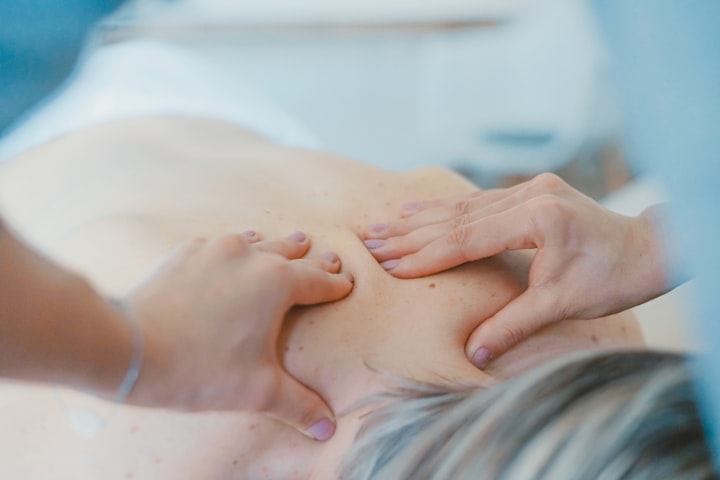
Manual therapy is a treatment option for individuals experiencing paralysis and scoliosis
Today, we are excited to introduce a new video where we document our progress in correcting posture for our patient, Yulia. This is Yulia's fifth session with us, and we have been diligently working on improving her posture. In this video, Yulia will share the details of her journey and what brought her to seek our help. Yulia came to us with the goal of correcting her posture, as she suspected she had scoliosis in her lumbar spine. Her main objective was to stretch her shoulders and prevent further complications from scoliosis. We were eager to know how Yulia felt about the results after undergoing our procedures. She mentioned feeling a noticeable ease in her cervical spine and a pleasant warmth in her back. These positive sensations were quite comforting for her. We proceeded to inquire if Yulia's posture had improved. She responded affirmatively, expressing her contentment with the progress made thus far. With this update, we look forward to observing how Yulia's posture continues to improve in the future. Stay tuned for more updates on her journey!Diagnosing and treating Yulia's spinal condition through manual therapy, we are currently examining her spine. On the left side of the thoracolumbar region, there is hypertonicity causing a slight inward immersion of the vertebra. By leaning forward slightly and observing with our hands, we can observe the presence of a hole where the spine leaves and appears to be compromised. This occurrence is often attributed to hyperactive growth during adolescence when the spine hasn't fully formed, commonly affecting the lower thoracic region. Typically, the vertebrae shift to the left in the thoracic region before moving to the right. This imbalance is noticeable from the shoulders, with the right shoulder being significantly higher than the left shoulder. Initially, there is leftward flexion followed by hyperextension of the shoulder girdle to the right. Additionally, tilting the head forward reveals an active protrusion of the seventh cervical vertebra, which requires attention in our treatment plan. Further down the spine, there is a slight rotation of the pelvis towards the right, resulting in the right side being slightly higher and compressed compared to the left side. To gain a more comprehensive understanding, consider watching additional videos and complete editions through our sponsored content. Don't forget to subscribe for updates.
Diagnosing and performing manual therapy on Yulia's spine is our current focus. Observing her spine, we can identify hypertonicity on the left side of the thoracolumbar region, where the vertebra is slightly curved inward. By leaning forward slightly and examining the hands, we can observe the protrusion in this area. This issue is often caused by hyperactive growth during adolescence, particularly in the lower thoracic region. Typically, the vertebrae shift from left to right in this region. The imbalance is also evident in the shoulders, with the right shoulder appearing higher than the left shoulder. The movement pattern starts with flexion to the left, followed by hyperextension of the shoulder girdle to the right. When tilting the head forward, we notice that the seventh cervical vertebrae Without performing these manipulations, everything is now in order. We have no objections. Three vertebrae that required slight adjustment have been successfully realigned. The other leg is also slightly bent and pulling the sacrum towards the sofa. Unfortunately, there were no suitable stretching blocks available. We correct the positioning from the base of the chest and take a deep breath. Rotate a little by hand, if the left side is stuck, a slight adjustment can be made to the left side. It is crucial to focus on adjusting the shoulder and collarbone. Only the shoulder needs to be slightly freed from the functional block. The second thoracic vertebra has now fallen back into place. The elbow is positioned between the shoulder blade and the spine. We now lower our heads. How is Julia feeling? She is doing well, everything is fine. Is she feeling slightly scared? That is not normal. That's good. She even looks cute. Now we move on to adjusting the lower back at the thoracolumbar junction. We also address the area above. We are currently focusing on adjusting the lower thoracic region. This is where our attention is drawn. First, there is a twist, followed by a gentle pull. Even visually, the depression appears to be reducing in size. We just need to relieve the spasm, and the spine will become smoother. This is the priority. We relieve the cervical lordosis here, so we want the head to hang down a bit. We will rotate the neck from this position. On the right side, we still need to release and pull it out. How are you feeling? Excellent, great, the heat has dissipated, and the neck feels stretched. Well, relax in this position. This is the normal posture when you have lordosis, with your chin at a 90-degree angle. Now we will create a small lock on the upper and middle spine. How do you feel after the impact? Overwhelming. Overwhelming? Yes! Does it make you think of something like death? Yes. The blood flow to the brain improves when the seventh cervical vertebra is slightly released. How do you feel now? Light and unrestricted, unlike before. Even your face has a slight flush. Thank you all, everyone, for your participation. Wishing you all the best, and see you soon on air!
About the Creator
Reader insights
Nice work
Very well written. Keep up the good work!
Top insight
Expert insights and opinions
Arguments were carefully researched and presented





Comments (1)
جميل للغايه